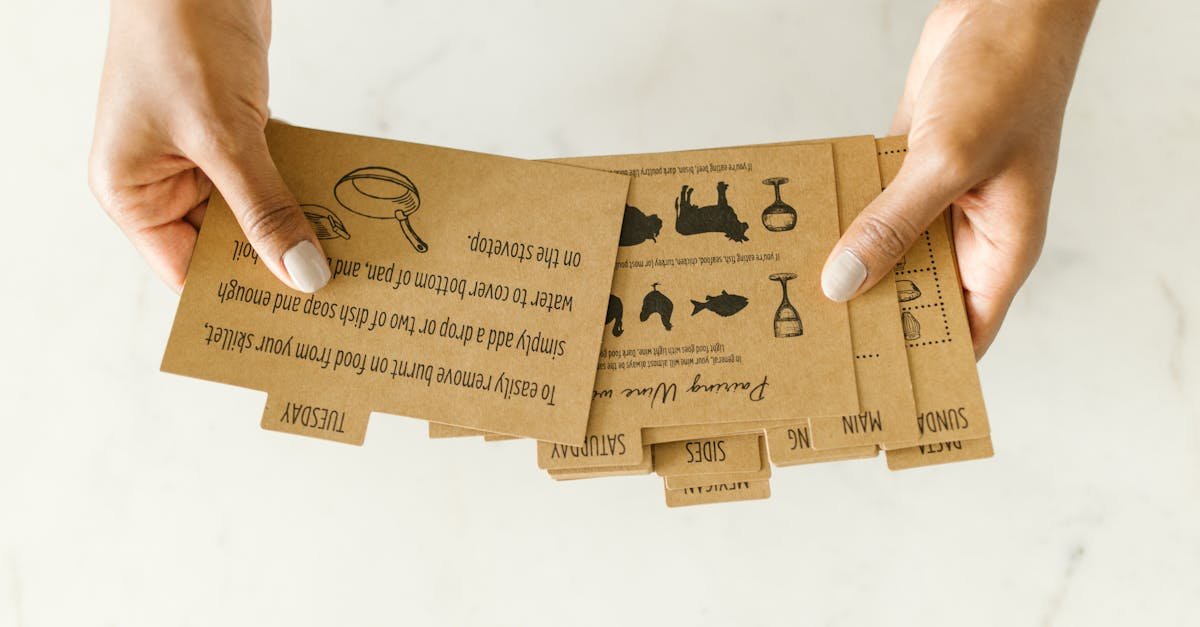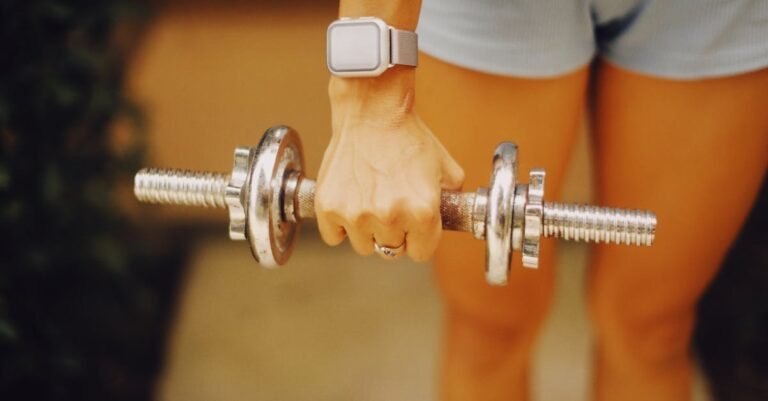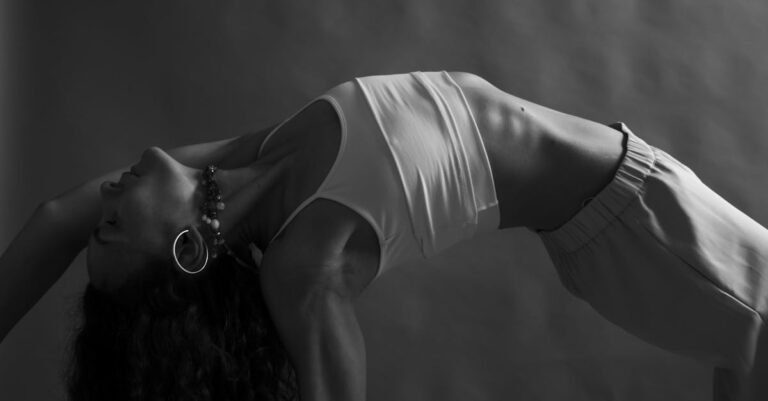Table of Contents
Simple Push Up Guide For Beginners
Why Bother with Push Ups Anyway?
The Underrated Powerhouse Exercise
Benefits You Can Actually Feel
Building Strength (Not Just Arms!)
Boosting Your Core Stability
Improving Posture
Getting Started: What You Need (Spoiler: Not Much!)
Your Body is Your Gym
Finding the Right Space
Mastering the Form: The Foundation of a Perfect Push Up
Step 1: Hand Placement – Getting it Right
Step 2: Body Alignment – Straight as an Arrow
Step 3: The Descent – Controlled Movement
Step 4: The Ascent – Pushing Through
Can’t Do a Full Push Up Yet? No Problem! Modifications to the Rescue
Wall Push Ups: Your Starting Point
Incline Push Ups: Bridging the Gap
Knee Push Ups: Getting Closer
Common Push Up Mistakes (And How to Fix Them)
The Sagging Middle: Banana Back Syndrome
Flaring Elbows: Protecting Your Shoulders
Rushing the Reps: Quality Over Quantity
Building Your Push Up Routine: Consistency is Key
How Many Reps and Sets?
Listening to Your Body: Rest and Recovery
Taking it to the Next Level (Eventually!)
Conclusion: Your Push Up Journey Starts Now
Frequently Asked Questions (FAQs)
FAQ 1: How often should I do push ups?
FAQ 2: Will push ups make me bulky?
FAQ 3: What if I feel pain during push ups?
FAQ 4: Can I do push ups every day?
FAQ 5: Are push ups enough for upper body strength?
Simple Push Up Guide For Beginners
So, you want to conquer the push up? Awesome! Often seen as a basic fitness test, the humble push up is way more than just dropping down and pushing back up. It’s a fundamental movement, a testament to your strength, and honestly, pretty empowering once you get the hang of it. But let’s be real, starting out can feel intimidating. Maybe you’ve tried before and felt like a floppy fish, or perhaps the idea of supporting your own body weight seems impossible right now. Don’t sweat it! This guide is your friendly companion, designed to take you from zero to push up hero, step by simple step. Forget complicated routines or fancy equipment; we’re focusing on building a solid foundation, understanding the mechanics, and celebrating every little win along the way. Ready to unlock your inner strength?
Why Bother with Push Ups Anyway?
Okay, I hear you. In a world filled with countless workout trends and high tech gym machines, why focus on something as seemingly simple as a push up? Isn’t it just an old school exercise? Well, yes and no. It is old school, but for a very good reason: it works. And it works incredibly well, offering a surprising bang for your buck (or rather, your effort!).
The Underrated Powerhouse Exercise
Think of the push up as the Swiss Army knife of bodyweight exercises. It doesn’t just target one isolated muscle group. Oh no, it’s a compound movement, meaning it engages multiple joints and muscles simultaneously. When you perform a push up correctly (and we’ll get to the ‘correctly’ part soon!), you’re working your chest, shoulders, triceps (the back of your arms), core, and even parts of your back and legs for stability. It’s a full upper body and core workout rolled into one efficient move. You’re essentially lifting a significant percentage of your body weight, which is no small feat! It builds functional strength – the kind of strength you use in everyday life, like pushing open a heavy door, lifting groceries, or playing with your kids (or pets!). It’s functional, efficient, and incredibly effective.
Benefits You Can Actually Feel
Beyond just getting stronger, incorporating push ups into your routine brings a cascade of positive effects you’ll genuinely notice.
Building Strength (Not Just Arms!)
Let’s clear this up first: push ups aren’t just for building bulging biceps (though your triceps will definitely get some love!). The primary movers are your pectoral muscles (your chest) and your deltoids (shoulders). Your triceps act as powerful assistants, helping to straighten your arms. But the supporting cast is huge! Your abdominal muscles, your back muscles, even your glutes and quads fire up to keep your body stable and aligned. It’s a coordinated effort that builds integrated strength across your upper body and core, translating to better performance in other activities too.
Boosting Your Core Stability
Forget endless crunches for a second. A proper push up demands serious core engagement. What is the core, exactly? Think of it as a muscular corset around your midsection, including your abs, obliques, and lower back muscles. To perform a push up without your hips sagging or sticking up in the air, this corset needs to be tight and strong. Every single repetition is essentially a moving plank, challenging your core to maintain a rigid line from your head to your heels (or knees, depending on the variation). A stronger core means better balance, reduced risk of lower back pain, and improved power transfer in almost any movement you make.
Improving Posture
Are you spending hours hunched over a computer or phone? Guilty as charged? Yeah, me too sometimes. This chronic slumping can lead to rounded shoulders and a weak upper back. Push ups, when done correctly, help counteract this! They strengthen the chest muscles (which can get tight from hunching) and engage the muscles in your upper back (like the serratus anterior) that help pull your shoulder blades back and down, promoting a more upright, confident posture. It’s like telling your body, “Hey, let’s stand tall!”
Getting Started: What You Need (Spoiler: Not Much!)
One of the absolute best things about push ups? The barrier to entry is ridiculously low. You don’t need a pricey gym membership, fancy spandex (unless you want it!), or a garage full of weights.
Your Body is Your Gym
Seriously, that’s it. Your own body provides the resistance. How cool is that? You carry your ‘equipment’ with you everywhere you go. This makes push ups incredibly versatile and convenient. Stuck in a hotel room? Waiting for dinner to cook? Got five minutes during a commercial break? You can sneak in some push ups almost anywhere, anytime. No excuses!
Finding the Right Space
While you don’t need special equipment, you do need a little bit of floor space. Find a spot where you can comfortably extend your body without bumping into furniture or walls. A non slip surface is ideal – a yoga mat, carpet, or even a firm patch of grass works great. Make sure the area is clear and safe. You just need enough room to lie down flat and extend your arms fully. That’s literally all the setup required!
Mastering the Form: The Foundation of a Perfect Push Up
Okay, let’s get down to business – literally! Proper form is non negotiable. It’s not just about looking good (though a well executed push up does look impressive); it’s about maximizing effectiveness and, crucially, preventing injuries. Sacrificing form for more repetitions is a fast track to frustration and potential pain. We want strong, healthy shoulders and backs, right? So, let’s break down the perfect push up, piece by piece.
Step 1: Hand Placement – Getting it Right
Start in a high plank position. Place your hands directly under your shoulders, or just slightly wider than shoulder width apart. Think about where you’d naturally place your hands if you were going to push something heavy away from you – that’s usually a good starting point. Spread your fingers wide and grip the floor slightly, like you’re trying to grab it. This helps distribute the pressure and engage more muscles. Your fingers can point straight forward or slightly outwards, whichever feels more comfortable on your wrists. Avoid placing your hands too wide or too far forward, as this puts unnecessary stress on your shoulder joints.
Step 2: Body Alignment – Straight as an Arrow
This is where that core engagement we talked about comes in clutch. From your head to your heels, your body should form one straight, rigid line. Imagine a broomstick resting along your back – it should touch your head, upper back, and butt. Engage your core by pulling your belly button towards your spine (but don’t hold your breath!). Squeeze your glutes (your butt muscles) – this helps prevent your hips from sagging. Keep your neck in a neutral position by looking slightly ahead of your hands on the floor, not down at your feet or up at the ceiling. Avoid letting your hips droop towards the floor (the dreaded ‘banana back’) or pike up towards the ceiling.
Step 3: The Descent – Controlled Movement
Now for the lowering phase. Take a breath in as you slowly bend your elbows, lowering your entire body towards the floor as one unit. Where should your elbows go? Not flared out wide like chicken wings! Keep them relatively close to your body, pointing somewhat backward at roughly a 45 degree angle from your torso. Think of making an arrow shape with your head and arms, rather than a ‘T’ shape. Control the movement all the way down. Don’t just flop! Aim to lower until your chest or chin is close to the ground, or as far as you can comfortably go while maintaining good form. The slower and more controlled the descent, the more muscle tension you create, which means better results.
Step 4: The Ascent – Pushing Through
You’ve reached the bottom, now it’s time to push back up! Exhale forcefully as you push through the palms of your hands, straightening your elbows to return to the starting plank position. Imagine you’re trying to push the floor away from you. Maintain that straight body line throughout the entire movement – don’t let your hips lag behind or shoot up first. Keep your core and glutes tight. The ascent should be powerful but still controlled. Congratulations, you’ve completed one repetition!
Can’t Do a Full Push Up Yet? No Problem! Modifications to the Rescue
Feeling overwhelmed by the standard push up? Thinking, “There’s no way I can do that yet”? That is perfectly okay and completely normal! Seriously, most beginners can’t just jump into perfect floor push ups on day one. The beauty of this exercise lies in its scalability. We can modify it to meet you exactly where you are right now. The goal isn’t instant perfection; it’s progressive overload – gradually making the exercise harder as you get stronger. Let’s look at the best ways to build up.
Wall Push Ups: Your Starting Point
This is the most beginner friendly variation. Stand facing a sturdy wall, about arm’s length away. Place your hands on the wall, slightly wider than shoulder width apart, at chest height. Keep your feet planted, body straight (engage that core!), and bend your elbows to bring your chest towards the wall. Keep your elbows tucked in slightly, just like in a floor push up. Push back to the starting position. Easy, right? The further your feet are from the wall, the harder it becomes. Start close and gradually increase the distance as you feel stronger. It’s the same fundamental movement pattern, just with much less body weight to lift.
Incline Push Ups: Bridging the Gap
Once wall push ups feel too easy, it’s time to transition towards the floor. Find a sturdy elevated surface – a kitchen counter, a strong table, a park bench, or the stairs work perfectly. The higher the surface, the easier the push up, because you’re lifting less of your body weight. Place your hands on the edge of the surface, slightly wider than shoulder width. Step your feet back so your body forms a straight line from head to heels. Perform the push up just like you did against the wall (and how you would on the floor): lower your chest towards the surface with control, keeping elbows slightly tucked, and push back up. As you get stronger, you can gradually use lower surfaces, bringing you closer and closer to the floor and making the exercise progressively harder.
Knee Push Ups: Getting Closer
Often called “modified push ups,” knee push ups are another fantastic stepping stone. Start on your hands and knees. Walk your hands forward until they are under your shoulders (or slightly wider) and your body forms a straight line from your head to your knees this time. Your lower legs can rest on the floor or you can cross your ankles in the air. Engage your core and glutes! Lower your chest towards the floor, keeping those elbows tucked in, and push back up. The key here is maintaining that straight line from head to knees – don’t let your hips sag or pike up. Many people find these more challenging than incline push ups, so experiment and see what feels right for your progression.
The goal is to gradually decrease the incline or move from knees to toes as you build strength. Be patient with yourself! Progress isn’t always linear, but consistency with these modifications will get you to that full floor push up.
Common Push Up Mistakes (And How to Fix Them)
Even with the best intentions, a few common form errors can creep in, especially when you’re starting out or getting tired. Recognizing these pitfalls is the first step to correcting them and ensuring you’re getting the most out of the exercise safely.
The Sagging Middle: Banana Back Syndrome
The Mistake: Letting your hips droop towards the floor as you lower or push up. Your body looks less like a straight plank and more like a sad banana or a suspension bridge.
Why it’s Bad: This indicates a lack of core engagement and puts unnecessary stress on your lower back. It also makes the push up less effective as you’re not moving your body as a single unit.
The Fix: Consciously squeeze your glutes (seriously, pretend you’re cracking a walnut back there!) and actively brace your abdominal muscles by pulling your belly button towards your spine throughout the entire movement. Thinking “straight line from head to heels” (or knees) should be your mantra. If you still struggle, regress to an easier variation (like incline push ups) where you can maintain proper alignment.
Flaring Elbows: Protecting Your Shoulders
The Mistake: Letting your elbows flare directly out to the sides, forming a ‘T’ shape with your body at the bottom of the push up.
Why it’s Bad: This position puts a lot of strain on the delicate rotator cuff muscles and the shoulder joint itself, increasing the risk of impingement and injury over time. It’s just not an anatomically friendly position for repetitive pressing.
The Fix: Tuck your elbows slightly, aiming for about a 45 degree angle relative to your torso. Think about pointing your elbows somewhat backward, not straight out to the sides. Imagine you’re screwing your hands into the floor – this can help engage the right muscles to keep your elbows in a safer position. If this feels awkward, check your hand placement; they might be too wide.
Rushing the Reps: Quality Over Quantity
The Mistake: Banging out repetitions as fast as possible, often using momentum and sacrificing range of motion or control.
Why it’s Bad: Speed kills form. Rushing usually means you’re not controlling the descent (missing out on valuable muscle building tension) and likely using sloppy form, increasing injury risk. You’re cheating yourself out of the real benefits.
The Fix: Slow down! Focus on controlling the entire movement, especially the lowering (eccentric) phase. Aim for a tempo like 2 seconds down, maybe a brief pause at the bottom, and 1-2 seconds up. Each rep should feel deliberate and controlled. Remember, 5 perfect, controlled push ups are far better than 15 sloppy, rushed ones.
Building Your Push Up Routine: Consistency is Key
Alright, you understand the benefits, you know the form, and you’ve found the right modification for your current level. Now what? How do you actually integrate push ups into a routine that builds strength without burning you out? Consistency, my friend, is the magic ingredient.
How Many Reps and Sets?
This is where “it depends” comes into play, but here’s a solid starting point. Find the push up variation you can perform with good form for about 5 to 10 repetitions. Don’t push to absolute failure where your form completely breaks down, but aim for challenging reps.
- Start with: 2-3 sets of as many good form repetitions (AMRAP) as you can manage, stopping 1-2 reps short of failure.
- Rest: Take about 60-90 seconds of rest between sets. This allows your muscles time to recover slightly so you can maintain good form on the next set.
- Frequency: Aim to do this routine 2-3 times per week on non consecutive days (e.g., Monday, Wednesday, Friday). This gives your muscles time to repair and grow stronger between sessions.
As you get stronger, you’ll find you can do more reps per set. Once you can comfortably perform, say, 3 sets of 12-15 reps of a particular variation with excellent form, it’s time to progress! Either move to a slightly harder variation (lower incline, transition from knees to toes) or add more sets/reps. The goal is progressive overload – continually challenging your muscles just enough to stimulate growth.
Listening to Your Body: Rest and Recovery
This is super important! While consistency is key, pushing through sharp pain or ignoring fatigue is counterproductive. Muscle soreness (Delayed Onset Muscle Soreness or DOMS) a day or two after a workout is normal, especially when starting. However, sharp, pinching, or joint pain during the exercise is a signal to stop. Check your form, try an easier variation, or take an extra rest day. Recovery is when your muscles actually rebuild and get stronger. Don’t underestimate the power of rest days and adequate sleep. Overtraining can lead to injury and burnout, halting your progress altogether. Be patient, be persistent, and listen to the signals your body sends you.
Taking it to the Next Level (Eventually!)
Once you’ve mastered the standard push up and can comfortably crank out multiple sets, you might start wondering, “What’s next?” The world of push ups is vast! You can explore variations like:
- Diamond Push Ups: Hands close together, forming a diamond shape, to target the triceps more intensely.
- Wide Grip Push Ups: Hands wider than shoulder width to emphasize the chest.
- Decline Push Ups: Elevate your feet on a bench or step to increase the resistance and target the upper chest and shoulders more.
- Plyometric Push Ups: Explosively pushing up so your hands leave the ground (clap push ups are an example).
- One Arm Push Ups: The ultimate test of unilateral strength and stability (definitely an advanced goal!).
But don’t rush this! Build a solid foundation with the basics first. Mastering the standard push up with perfect form is a significant achievement in itself.
Conclusion: Your Push Up Journey Starts Now
And there you have it – your comprehensive guide to starting your push up journey! We’ve covered why this classic exercise is so beneficial, broken down the form step by step, explored modifications to meet you where you are, highlighted common mistakes, and discussed how to build a sustainable routine. Remember, the goal isn’t to be perfect overnight. It’s about showing up consistently, focusing on quality movement, listening to your body, and celebrating your progress. Whether you start with wall push ups or knee push ups, every single rep performed with good form is building strength, stability, and confidence. You don’t need fancy equipment or hours in the gym – just a little space and the determination to push yourself, quite literally. So, find your starting point, embrace the process, and get ready to discover just how strong you can become. Your push up journey begins now!
Frequently Asked Questions (FAQs)
FAQ 1: How often should I do push ups?
For beginners focusing on building strength, aim for 2-3 times per week on non consecutive days. This allows your muscles adequate time to recover and rebuild, which is crucial for getting stronger. Doing them every single day, especially when starting, can lead to overuse injuries or burnout without significant added benefit for strength gains.
FAQ 2: Will push ups make me bulky?
It’s highly unlikely, especially for women. Building significant muscle mass (bulk) requires a combination of specific training (often involving heavy weights and high volume), genetics, and a calorie surplus (eating more calories than you burn). Push ups build functional strength and muscle tone. They’ll help you develop lean muscle in your chest, shoulders, and triceps, leading to a stronger, more defined look rather than significant bulk.
FAQ 3: What if I feel pain during push ups?
Stop immediately if you feel sharp, pinching, or joint pain (especially in the wrists, elbows, or shoulders). Muscle fatigue or a burning sensation is normal, but pain is not. First, double check your form – are your elbows flared? Is your core engaged? Are your hands placed correctly? If the form seems okay, the exercise might be too advanced for you right now. Try an easier variation (like incline or wall push ups). If pain persists even with modifications and good form, consult a doctor or physical therapist to rule out any underlying issues.
FAQ 4: Can I do push ups every day?
While you can technically do some push ups every day, it’s generally not the most effective strategy for building strength, especially as a beginner. Your muscles need rest to repair and grow stronger. Doing intense push up workouts daily can hinder recovery. If you enjoy doing them daily, consider varying the intensity – maybe some days you do fewer reps or easier variations, focusing on form, and reserve more challenging sessions for 2-3 times a week. Listen to your body; if you feel constantly fatigued or sore, take more rest days.
FAQ 5: Are push ups enough for upper body strength?
Push ups are fantastic for developing “pushing” strength (chest, shoulders, triceps) and core stability. However, a truly well rounded upper body routine should also include “pulling” exercises to work the opposing muscle groups in your back and biceps (like rows or pull ups/pull down variations). Relying solely on push ups can potentially lead to muscle imbalances over time. So, while push ups are a cornerstone exercise, incorporating pulling movements will create a more balanced and functional upper body strength profile.










